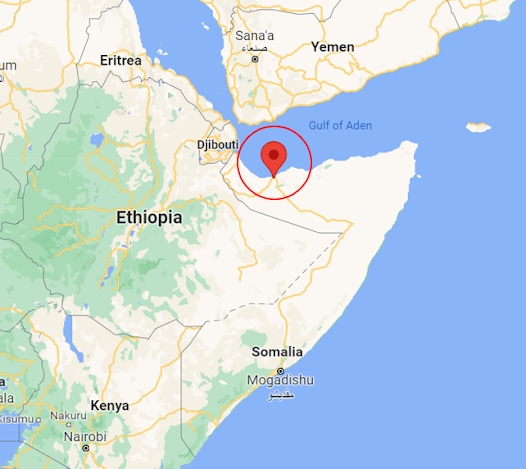Genetic Modification: Mitigating Drought in Ethiopia (Part I)
My last post highlighted the potential of desalinisation for agriculture in the Horn of Africa. Although promising, this offers little for nations without extensive coastlines. This entry will introduce the potential of genetically modified (GM) crops in mitigating the effects of drought and improving food security in land-locked Ethiopia.
Introducing Ethiopia & Genetic Modification
Rising temperatures, infrequent rainfall, population pressures and land-use changes have all contributed to Ethiopia's susceptibility to drought. Drought occurs when there is decreased water availability in a given area arising from below-average rainfall. Given Ethiopia's high dependence on rain-fed cropping, drought often has catastrophic impacts for food production. Moreover, adaptive capacity is limited due to insufficient infrastructure and has been worsened by the enduring Tigray civil conflict.
Climate change means droughts are becoming more intense and frequent. It is therefore crucial that Ethiopia seeks to minimise drought-risk, stabilise (but ideally increase) crop yields and encourage small-scale farmers to adopt optimal management strategies. Furthermore, farmers face the additional threat of insects, notably armyworms, which they are ill-equipped to manage. Mitigating these issues at source is key to achieving Ethiopia's development objective of food security and growth of the agricultural sector. This is where we turn to the potential of genetically modified organisms...
What are GMOs?
Genetically modified organisms (GMOs) are those whose genes have been altered through processes including recombinant DNA technology and genetic engineering. Genetic modification enables the production of crops with unique traits that can be employed in new ways. Existing GMOs have largely been developed to raise yields through greater drought- and disease-resistance. Although the development of GM crops has been restricted in the past due to misinformation and concerns around feasibility and profitability, contemporary research has evidenced their potential in reducing food prices and helping food security through improved yields.
The video below gives a useful overview of how GMOs work and some of the associated benefits and disadvantages.
Video The biology and genetics of GM crops.
TELA Maize in Ethiopia
Maize is grown by 8 million Ethiopian farmers, 95% of which are smallholders. It is cited as being directly associated with the food security of smallholder farmers: as much as 76% of the maize grown is consumed at home and only 12% sold. No other cereal crop has such a high degree of retention for domestic consumption.
Despite continued growth in maize production over the last twenty years, yields remain well below the world average. Between 2015-2018, Ethiopia's average yield stood at 3.6 tonnes/hectare, less than two-thirds of the world average. This discrepancy has been attributed to both abiotic and biotic stresses, notably drought and insect infestations respectively.
So, where does genetic modification come into this?
Following the relaxation of the national Biosafety Law in 2015, Ethiopia began considering the potentials of genetic modification technologies in its food production. This saw the launch of the TELA project where trials of drought-tolerant and insect-resistant maize were conducted as part of the philanthropic Water Efficient Maize for Africa (WEMA) initiative. These trials have shown that TELA maize can tolerate moderate drought and achieve high yields of up to 3-4 tonnes/hectare. In contrast, non-GM maize often fails to reach just one tonne in such conditions. In fact, drought often means total loss for farmers of non-GM maize. Other benefits of TELA maize include reduced costs of and exposure to insecticides by smallholder farmers and improved grain quality.
You may think this all sounds very promising. And it does. However, we must consider the challenges of commercialising GMOs in Ethiopia. To be continued next week...


Great post Emma! Although I also agree that the prospect of GM crops sounds promising and I look forward to part 2! In the meantime I am interested to hear any suitable alternatives to GM crops. Are there any other methods for mitigating the effects of drought and improving food security in Ethiopia?
ReplyDeleteThank you, Summer!
DeleteAn alternative way of mitigating drought and improving food security would be to increase the proportion of irrigated land and move away from rainfed agriculture. One way this could be achieved is through groundwater irrigation (GWI). GWI has been linked to improved food security as it is able to produce higher crop yields and increase land productivity compared to rainfed agriculture. Ethiopia is estimated to have groundwater reserves totalling 40 billion cubic metres so I think this method definitely has some potential. If you would like to find out a bit more about GWI, my two most recent posts explored its potential in Zambia.
Another way of mitigating the effects of drought and improving food security is through the construction of dams. Water can be stored during wet seasons and released during dry seasons (and during periods of drought) for irrigation. It will be interesting to see what impact the Grand Ethiopian Renaissance Dam will have in this respect.